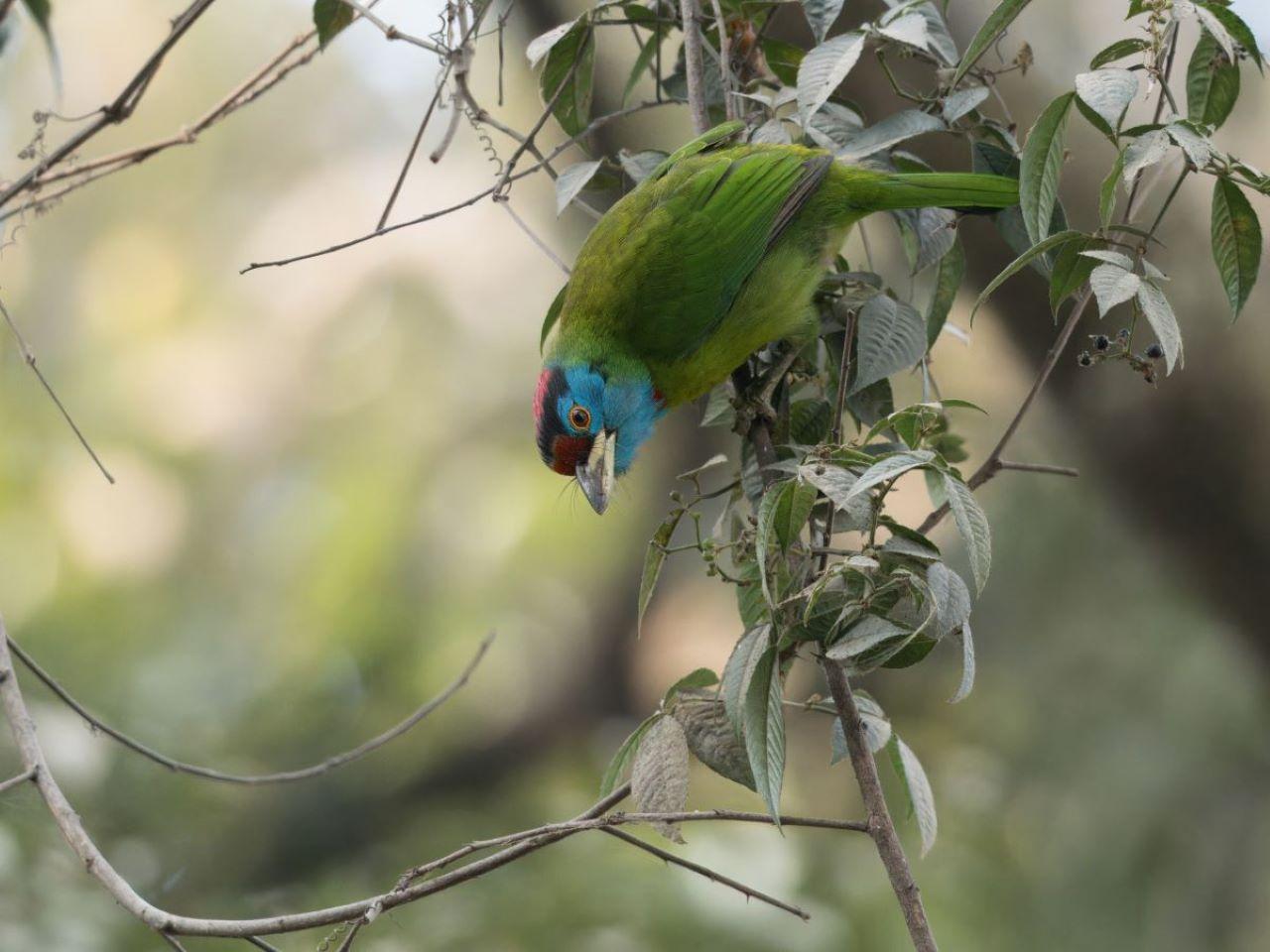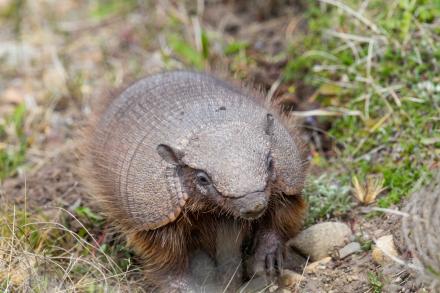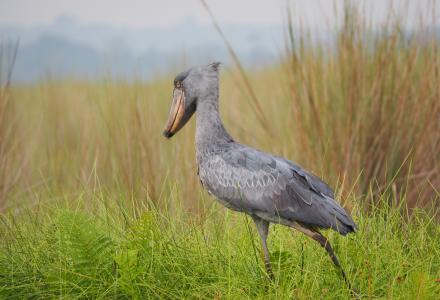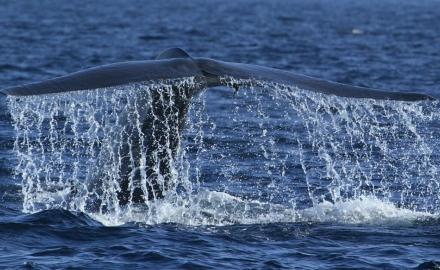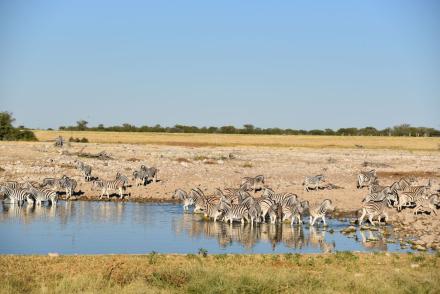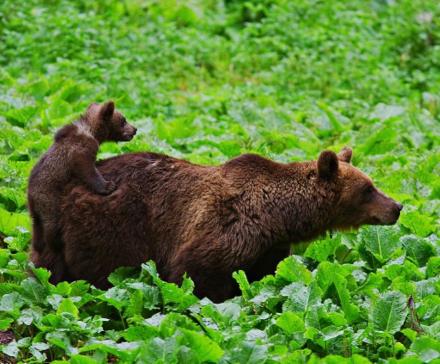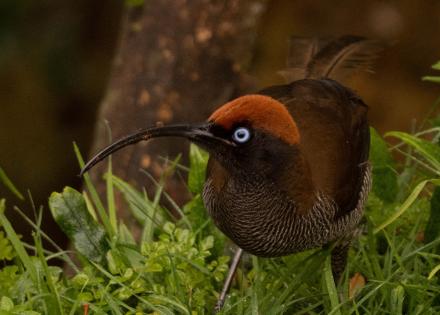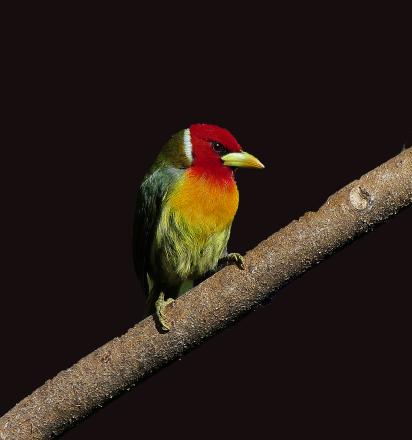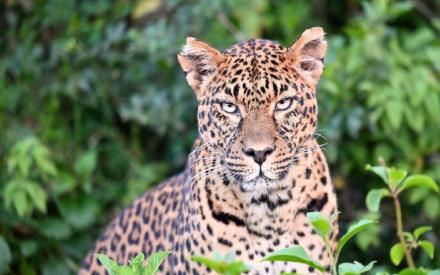Please allow about AU350pp for tips to local guide, driver and associated staff/community members.
Price based on a group size of 6-8 participants + Inala leader Dr Tonia Cochran + local guide.
A discount of AU$500 will apply for those taking a Nepal and Sri Lanka tour combination.
Our guided wildlife tour explorers the rich diversity of birds & wildlife in Nepal.
Nestled between China and India, Nepal is a country of extraordinary natural diversity. With an elevation ranging from 60 metres in the Gangetic Plain to greater than 8,800 metres at the summit of Sagarma tha - Mt Everest in the Himalayas, the country features a wide range of biomes and rich fauna and flora. Nepal boasts tropical savanna in the lowlands, subtropical broadleaf and coniferous forest in the hill areas, and temperate and alpine flora, rock scree and ice at the higher elevations. Over 890 species of birds have been recorded here, among them the country’s only endemic bird, the Spiny Babbler (Acanthoptila nipalensis), and the glorious rainbow-feathered Himalayan Monal, the national bird of Nepal.
In addition to the huge variety of birds, Nepal is home to 208 species of mammals, including Greater Onehorned Rhino, Asian Elephant, Bengal Tiger, Sloth Bear, Red Panda, Ganges River Dolphin, many species of deer including Sambar, Chital and Indian Muntjac, and primates such as Terai Grey Langur and Assam and Rhesus Macaques. Lowland rivers and lakes are home to the hefty Mugger Crocodile and the rare longsnouted Gharial, restricted to only a few locations in Nepal, northern India and possibly Bangladesh.
This tour has been designed to join a tour to Sri Lanka and there is an option of taking both at a discounted price.
Inclusions: Accommodation for 11 nights and specialist guiding and transport for day and night tours in a private air-conditioned vehicle with specialist licensed local guide and driver as outlined in the itinerary, all meals (B, L, D snacks and bottled water), entry fees to National Parks, vulture centre, and flight from Bharatpur to Kathmandu.
Exclusions: international and domestic airfares (except flight from Bharatpur to Kathmandu), Nepal arrival and entry visa fee, alcoholic and non-alcoholic beverages and expenses of a personal nature (travel and medical insurance, phone calls, laundry, tips etc), personal & incidental expenses and any additional activities not mentioned in the above itinerary.
The above rates are based upon a group size of 6-8 people. If the tour does not achieve minimum numbers, we will offer you the option of continuing with a smaller group size at a small supplement (we would always discuss options with you beforehand).
• Meals and drinks: Breakfast generally consists of eggs cooked how you like them, toast and spreads, tea/coffee and sometimes rice/noodles served in the hotel or lodges). Lunch will vary from a packed picnic to hot lunch depending on the location. Dinner is 2-3 courses eaten in the hotel. Drinks (soft and alcoholic) are generally not included.
• Whilst we aim to follow the itinerary as planned, please note that the itinerary provided should only be used as a guideline. Depending on individual trip circumstances, weather, and local information, the exact itinerary may not be strictly adhered to. The guides reserve the right to make changes to the itinerary as they see fit.
•A reasonable level of fitness is required for this tour. However, there are usually options to birdwatch close to the vehicle, and in Chitwan National Park we will be staying in the safari vehicle for most of the time for safety reasons.
• For much of this tour we will be in a wonderful yet remote part of the world. Most of the roads are unsealed, winding, narrow and rough. If you have medical conditions or health concerns, it is important you make us aware of these in advance of this tour.
Download the itinerary brochure for the Nepal - Wildlife and Culture in the Himalayas tour.
Download (pdf 1.46 MB)There are terms and conditions relating to payments, cancellations, refunds, insurance and responsibility for our tours.
Here's what you'll see and do on the Nepal - Wildlife and Culture in the Himalayas tour.
On arriving at the Tribhuwan International Airport in Kathmandu, our local guide will meet you at the airport and take you to your hotel. The city lies in the Kathmandu Valley at an elevation of around 1,400 metres. It is one of the oldest continuously inhabited cities in Asia and is the gateway to the spectacular Himalayas. The mountains were formed by the collision of India with Eurasia during the break-up of Gondwana in the Cretaceous Period. If time allows, we may take a cultural walking tour through the city of Kathmandu. We will meet for a welcome dinner at the hotel this evening.
Accommodation: Kathmandu hotel (en suite room).
Meals: D.
After an early breakfast, we will drive to Phulchowki Mountain (also spelt Phulchoki), about 16 km south-east of Kathmandu. At 2,782 m, it is the highest viewpoint in the Kathmandu valley and on a clear day provides a panoramic view of the Himalayas including distant views of Sagarma tha - Mt Everest. Phulcowki Mountain is recognized as an Important Bird Area (IBA). It supports mixed forests with oak, rhododendron, and bamboo. More than 400 species of birds have been recorded from the area. Our target species here are Hoary-throated Barwing, Himalayan Cutia and several Laughingthrush species, Darjeeling Woodpecker, Himalayan White-browed Shrike-babbler, White-tailed Nuthatch, and a range of sunbirds, warblers and fulvettas. The mountain is also home to Indian Muntjac, Orange-bellied Himalayan Squirrel, Rhesus Macaques and a rich diversity of butterflies.
Accommodation: Kathmandu hotel as for last night.
Meals: B, L, D.
Driving west along the Trisuli River valley, we will head to Pokhara in the foothills of Annapurna. Pokhara is Nepal’s second largest city and has a long history as a trading centre with India and China. Today is our best chance to see Ibisbill along the river and stream banks. A variety of other water and shorebirds such as Brown Dipper, Grey and White Wagtails, Ruddy Shelduck, Goosander (Merganser), Great Cormorant, Indian Pond Heron, Little Egret, River Lapwing, Common Greenshank Common Sandpiper. White-capped and Plumbeous Water Redstart can also be found here. We will have opportunities to see some migratory and resident raptors such Red-headed, Slender-billed and White-rumped Vultures and Steppe Eagle.
Accommodation: Resort at Pokhara (en suite rooms).
Meals: B, L, D. Please note: A road expansion program may make some stretches dusty and bumpy.
We have two full days to explore the Pokhara valley, a beautiful and bird rich area where over 100 species can be seen, with diverse habitats, from lakes and wetlands to amazing views of Himalayas. Our first target is to find Spiny Babbler which is Nepal’s only endemic bird species. Other species such as Crimson Sunbird, Great Barbet and Grey-headed Canary Flycatcher are also possible here. We will also visit a nearby river for a chance of Slaty-backed, Little and Spotted Forktails, White-capped and Plumbeous Water-redstart, Brown Dipper and Crested Kingfisher, before visiting alocation where 6-7 species of vulture (Egyptian, White-rumped, Slender-billed, Himalayan, Griffon, Cinereous and Red-headed Vulture) and Steppe Eagle congregate on the ground to wait for thermals. Red-throated (Taiga) Flycatcher and Common Stonechat can also be seen in this area. The garden around our accommodation and the nearby forest provides habitat for a large number of species including Blue-throated Barbet, Hair-crested Drongo, Yellow-bellied Fairy-fantail, White-crested Laughingthrushes, Velvet-fronted Nuthatch, Grey Treepie, Common Green Magpie, Long-tailed Broadbill and Slaty-blue Flycatcher. Assam Macaques can also be found here. Wetlands in the area support a large variety of birds including Bar-headed Goose, Ruddy Shelduck, a variety of ducks (Gadwall, Eurasian Wigeon, Northern Shoveller, Tufted Duck, Common Teal and Red-crested Pochard), Great Cormorants, Pallas’s Gull, Little Ringed Plover. a variety of herons and Egrets, Purple Swamphens and three species of lapwing ((Northern, Grey-headed and Red-wattled Lapwing). Osprey, Asian Woollyneck, Black Storks, Greater Painted Snipe, Eurasian Wryneck, Bluethroat, Pine and Yellow-breasted Bunting and Dusky Warbler can also be found here.
Accommodation: Resort at Pokhara (en suite rooms) as for night 3.
Meals: B, L, D each day.
Today we will travel south-west across the valley from Pokhara to Lumbini via the hills of Palpa-Butwal. We will stop at a long suspension bridge spanning the Adhi Khloa River and scan the rocky road cuttings enroute for Wallcreepers. We will aim to arrive for a late lunch at our lodge so that we can bird in the grounds. Greater Coucal, Indian Grey Hornbill, Yellow-crowned Woodpecker, Brown Shrike, Rufous Treepie, Cinereous Tit, Aberrant Bush-warbler, Red-whiskered and Red-vented Bulbul, Brahminy Starling, Oriental Robin, Rosy Pipit, Little Cormorant, Jungle Babbler are some of the birds we can see here; Indian Grey Mongoose are also often seen. Around 5pm, we will visit a nearby stream to view Sarus Cranes displaying with their loud call. We will also be looking for Asian Openbill, Red-naped Ibis, Indian Pond Heron, White-breasted Waterhen, Red Wattled Lapwing, White-breasted and Pied Kingfisher. We will return to our lodge for dinner and spotlight for Spotted Owlet which is resident in the grounds.
Accommodation: Lumbini lodge (en suite rooms).
Meals: B, L, D.
We have a full day to explore this area today. Lumbini is mostly flat agricultural land close to the India border. We will visit a combination of farmland, wetland and forest. Jagdspur Wetland is the largest reservoir in Nepal (225ha) and is listed as an Important Bird Area (IBA) as one of the prominent sites for migratory water birds (both winter and summer visitors). Key bird species here include Sarus Crane, Indian Grey Hornbill, Brown Rockchat, Yellow-crowned Woodpecker, Lesser Adjutant Stork, Asian Openbill, Asian Woolly-necked Stork, Black- necked Stork (rare), Black-winged Kite, Indian Spotted Eagle, Indian Spot-billed Duck, Red-crested and Common Pochard, Eurasian Coot, Eurasian Wigeon, Common Teal, Northern Shoveler, Ferruginous Duck, Northern Pintail, Tufted Duck, Garganey, Great-crested Grebe, Purple Heron and Western Cattle, Intermediate and Little Egrets, Purple Swamphen, Common Moorhen, Common Coot, Pheasant-tailed and Bronze-winged Jacana, and White and White-browed Wagtail. Bluethroat, Ashy Prinia, Striated Grassbird and Zitting Cisticola can be seen in reeds in the shallows.
Lumbini is also the birthplace of Shakyamuni Gautam (Lord) Buddha who was born in 623BC. This is one of the highly respected pilgrimage sites for Buddhist devotees and peace lovers in addition to being a great place for birds and wildlife. It became a UNESCO World Heritage Site in 1997 because of its ‘Outstanding Universal Value’. We will visit this sacred site this afternoon before returning to our lodge for dinner.
Accommodation: Lumbini lodge (en suite rooms). Meals: B, L, D.
This morning, we will drive about 4-5 hours to our homestay in a community lodge near World Heritage Listed Chitwan National Park, aiming to arrive in time for lunch. We will then bird the lodge grounds (Greenish Warbler, Blue-bearded and Asian Green Bee-eater and other species) before exploring the village for a mix of farmland and forest birding. Species we expect to see include Alexandrine, Red-breasted and Plum-headed Parakeets, Indian Roller, Indian Grey Hornbill, Grey-capped Woodpecker, Scarlet Minivet, Black and Ashy Drongo, White-throated Fantail, Cinereous Tit, Rufous Treepie, Jungle Prinia, Grey-sided Bush-warbler, Yellow-eyed Babbler, Chestnut-bellied Nuthatch, Indian Robin, Oriental Honey Buzzard and Indian Spotted Eagle. We will also visit a nearby river in the late afternoon where Bar-headed Goose, Little Cormorant, Osprey, groups of Little Pratincole, Sand Lark and Pied and White-breasted Kingfisher can be found in the water and on the shoreline, before returning to the lodge for a delicious dinner, spotlighting for Spotted Owlet and then drifting off to sleep to the sound of the resident Golden Jackals’ peculiar high pitched howling.
Accommodation: Community lodge near Chitwan National Park (en suite rooms).
Meals: B, L, D.
After breakfast, we will start our journey to the Community Forest to visit a vulture centre, where injured vultures are rehabilitated, and the wild vultures are fed cattle that have died of natural causes. Here we will have a private presentation on globally threatened vulture species conservation by a vulture conservation officer. We will then view vultures from a hide and should see seven to eight species here (Egyptian, White-rumped, Slender-billed, Himalayan Griffon, Griffon, Cinereous, Red-headed and possibly Indian vulture) before driving into the community forest and grasslands. Species we hope to see here are Green-billed Malkoha, Lesser Coucal, Asian Barred Owlet, Blue-throated Barbet, Eurasian Wryneck, Grey-capped and Fulvous-breasted Woodpeckers, three Greater Flamebacks, Bar-winged Flycatcher Shrike and Common Wood-shrike, Black-winged Cuckoo Shrike, Small and Scarlet Minivet, Brown Shrike, Black-hooded Oriole, Greater Racquet-tailed Drongo, Common Iora , Grey-headed Canary-flycatcher, Grey-breasted Prinia, Pin-striped Tit-babbler, Chestnut-capped and Jungle Babbler, Oriental White-eye, female Slaty-blue Flycatcher and White-tailed Stonechat, Pied Bushchat, Indian Peafowl, Red Jungle Fowl, and Oriental Pied Hornbills, while mammal highlights should include Eurasian Wild Boar, Rhesus Macaque, Barking Deer (Muntjak) Spotted and Hog Deer. We also have a chance of seeing One-horned Rhinoceros. We will then board some wooden boats operated by men from the local community to paddle down the Narayani River, where we will look for Grey-headed Fish-eagle, Pallas’s Gull, River Lapwing, Little Ringed Plover, White-breasted, Common and Pied Kingfisher. We should also see Gharial sunbaking in the late afternoon light on the shore and if we are lucky may spot a Ganges (freshwater) Dolphin in the water.
Accommodation: Community lodge near Chitwan National Park (en suite rooms) as for last night. Meals: B, L, D.
This morning after an early breakfast we will travel inside the core area of Chitwan National Park in search of birds and mammals. We will access the park by first crossing the river and then boarding our open-roofed safari vehicle. Chitwan National Park is one the richest national parks for nature biodiversity. The park is home to over 400 species of birds and rare mega mammals such as Greater One-horned Rhinoceros, Bengal Tiger, two types of crocodiles (Gharial and Marsh Mugger), Asian Elephant and Sloth Bear. Our target bird species today are Great Hornbill, Bar-headed Goose, Garganey, Lesser-necklaced Laughingthrush, Red-headed Trogon, Grey-headed Fish Eagle, White-throated Bulbul, Osprey, Indian Peafowl, Kalij Pheasant, Rufous- necked Laughingthrush and several species of vulture (White-rumped, Red-headed, Slender-billed and Egyptian Vulture. This evening, we will be treated to some cultural dancing by the community members. The dances depict themes from their daily lives and included the Tharu Stick Dance and Fire Dance to celebrate our last night in the community.
Accommodation: Community lodge near Chitwan National Park (en suite rooms) as for last night.
Meals: B, L, D.
This morning, we will travel to Bharatpur Airport (about 30 minutes’ drive) for a short (20 minute) flight to Kathmandu airport, which will save a full day of driving over unsealed, bumpy roads. On our arrival we will be transferred to our hotel in Kathmandu. After lunch, there is an option of visiting the local market areas for last-minute souvenirs for family and friends. Alternatively, you may elect to have some free time to relax in the hotel and perhaps repack for our onward travels tomorrow.
Accommodation: Kathmandu hotel (en suite room). Meals: B, L, D.
Today we depart Nepal for our onward travels. No activities have been planned for today for this tour but those participants continuing onto Sri Lanka will join Tonia on the short flight to Colombo today. Accommodation: none. Meals: B.
